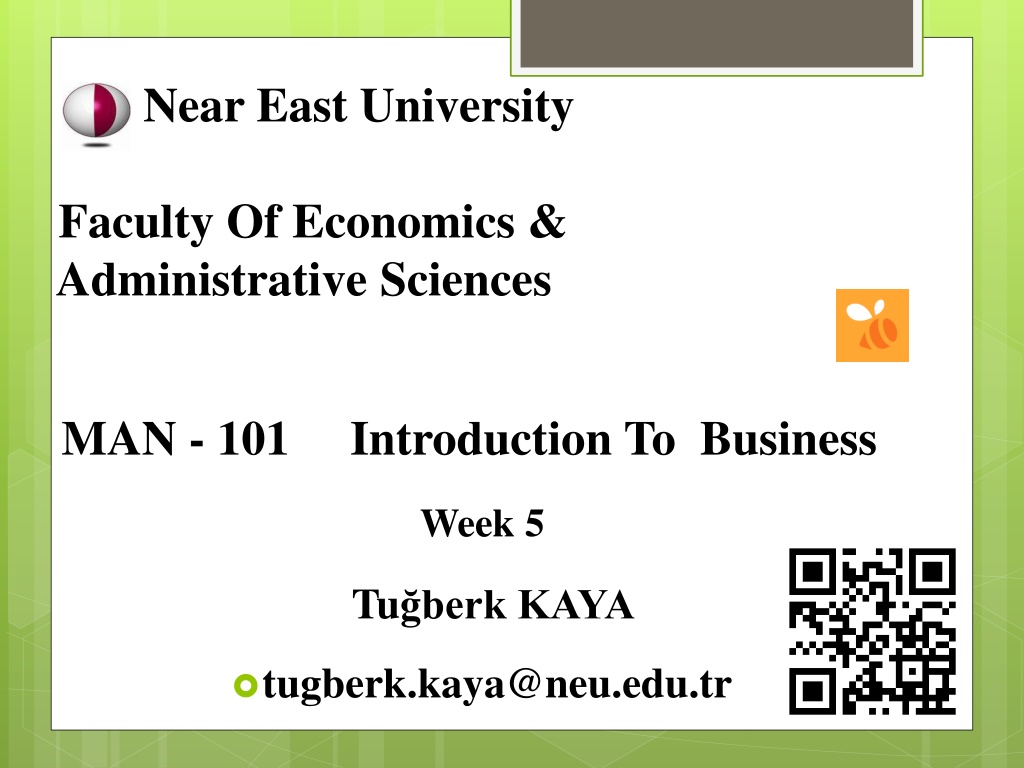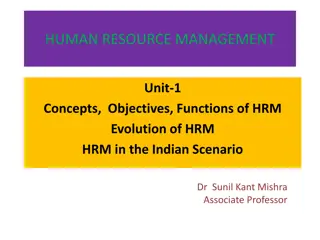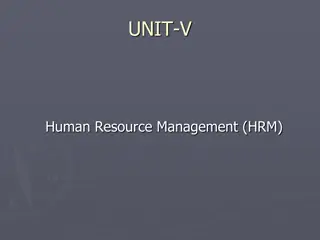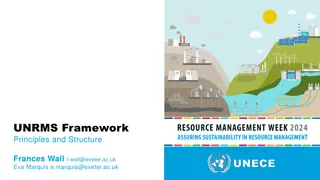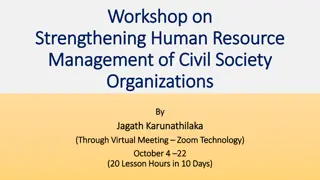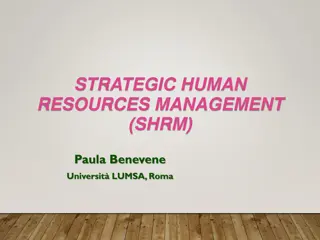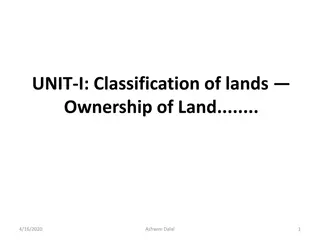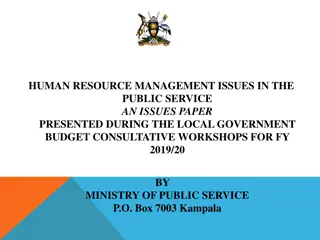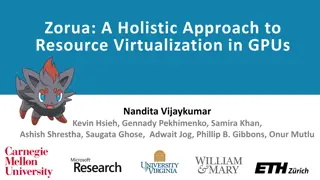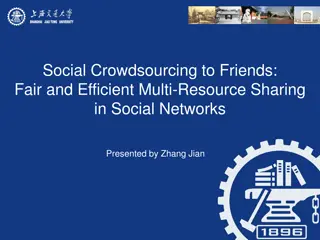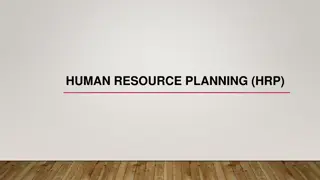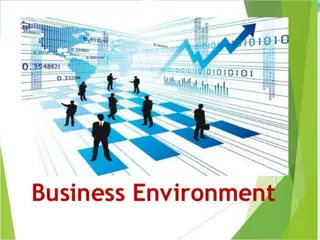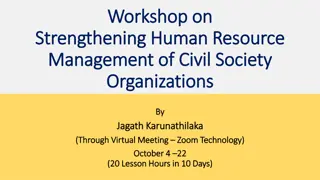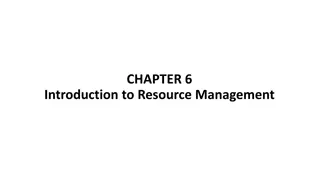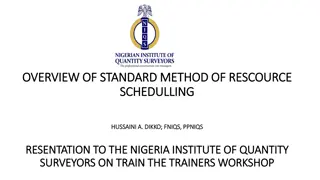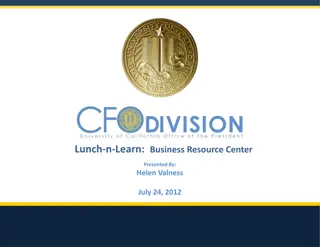Understanding Human Resource Management in Business
Human Resource Management (HRM) is crucial for organizations to acquire, train, appraise, and compensate employees effectively. It involves managing labor relations, health, safety, and fairness to enhance organizational integration, employee commitment, and work quality. HRM encompasses key activities like selection, performance management, rewards, and development to align business objectives with employee goals. HR managers need proficiencies in employee selection, training, compensation, strategic planning, leadership, and continuous learning. Job analysis is essential to determine job duties, skill requirements, and the type of candidates needed, leading to job descriptions and specifications.
Download Presentation

Please find below an Image/Link to download the presentation.
The content on the website is provided AS IS for your information and personal use only. It may not be sold, licensed, or shared on other websites without obtaining consent from the author. Download presentation by click this link. If you encounter any issues during the download, it is possible that the publisher has removed the file from their server.
E N D
Presentation Transcript
Near East University Faculty Of Economics & Administrative Sciences MAN - 101 Introduction To Business Week 5 Tu berk KAYA tugberk.kaya@neu.edu.tr
Human Resource Management (HRM) HRM is the process of acquiring, training, appraising, and compensating employees, and attending to their labor relations, health and safety, and fairness concerns. (Dessler, 2008) HRM comprises a set of policies designed to maximize organizational integration, employee commitment, flexibility and quality of work. (Guest, 1987) The management of work and people towards desired ends (Purcel et. al, 2003)
Four key activities: Selection, Performance management, Reward, Development (Fombrum, Tichy, Devanna 1984)
Aims of HRM Old Employment Model New Employment Model Flexible Low Conflict High Performance Inflexible High Conflict Low Productivity
HR Manager Proficiencies HR Proficiencies: 1. Employee Selection Training Compensation 2. Business Proficiencies: Merge business objectives with employee objectives. Strategic planning Production Marketing Finance
HR Manager Proficiencies 3. Leadership - Leading teams effectively - Change management 4. Continuous Learning: -Research and apply recent trends in the industry.
Job Analysis The procedure for determining the duties and skill requirements of a job and the kind of person who should be hired for. Why Job Analysis is required? In order to produce information used for job description and job specifications.
Definitions Job Description: A list of a job s duties, responsibilities, reporting relationships, working conditions, and supervisory responsibilities. Job Specifications: A list of a job s human requirements, required education, skills and personality.
Functions of HR Manager By job analysis HR Manager collets following information; Work activities Human Behaviours Machines, tools, equipment and work aids Performance standards Job context Human Requirements
Why job analysis is important? Recruitment and Selection Compensation Training Performance Appraisal Discovering Unassigned Duties
Personal Planning & Forecasting Personal Planning (PP) is about deciding what positions the firm will have to fill and how to fill them. PP can include all jobs from cleaning staff to CEO. Executive jobs can also be selected by succession planning. Personal Planning should derive from the firm s strategic plans.
Forecasting Personal Needs Simple method; forecast revenue then estimate size of staff required to achieve this sales volume. Trend Analysis: study of a firm s past employment needs over a period of years to predict future needs. Ratio Analysis: A forecasting technique for determining future staff needs by using ratios between, for example, sales volume and number of employees need. The Scatter Plot: A graphical method used to help identify the relationship between two variables.
The Training Process Training The process of teaching new employees the basic skills they need to perform their jobs. The strategic context of training Performance management: the process employers use to make sure employees are working toward organizational goals. Web-based training Distance learning-based training Cross-cultural diversity training
The Training and Development Process Needs analysis Identify job performance skills needed, assess prospective trainees skills, and develop objectives. Instructional design Produce the training program content, including workbooks, exercises, and activities. Validation Presenting (trying out) the training to a small representative audience. Implement the program Actually training the targeted employee group. Evaluation Assesses the program s successes or failures. 1. 2. 3. 4. 5.
Performance appraisal Evaluating an employee s current and/or past performance relative to his or her performance standards. Performance management The process employers use to make sure employees are working toward organizational goals.
Needs and Motivation Abraham Maslow s Hierarchy of Needs Five increasingly higher-level needs: physiological (food, water, sex) security (a safe environment) social (relationships with others) self-esteem (a sense of personal worth) self-actualization (becoming the desired self) Lower level needs must be satisfied before higher level needs can be addressed or become of interest to the individual.
Needs and Motivation Herzberg s Hygiene Motivator theory Hygienes (extrinsic job factors) Inadequate working conditions, salary, and incentive pay can cause dissatisfaction and prevent satisfaction. Motivators (intrinsic job factors) Job enrichment (challenging job, feedback and recognition) addresses higher-level (achievement, self- actualization) needs. The best way to motivate someone is to organize the job so that doing it helps satisfy the person s higher-level needs.
Instrumentality and Rewards Vroom s Expectancy Theory A person s motivation to exert some level of effort is a function of three things: Expectancy: that effort will lead to performance. Instrumentality: the connection between performance and the appropriate reward. Valence: the value the person places on the reward. Motivation = E x I x V If any factor (E, I, or V) is zero, then there is no motivation to work toward the reward. Employee confidence building and training, accurate appraisals, and knowledge of workers desired rewards can increase employee motivation.
References Dessler, G. (2008) Human Resource Management. 11th edn. Harlow: Pearson Education Ltd Drucker, P. F. (1993) Post-capitalist society. New York: Harper Collins Publishers Guest, D. (1987), Human resource management and industrial relations , Journal of Management Studies, Vol. 24 No. 5, pp. 503-21. DOI: http://dx.doi.org/10.1108/17410400810867508 DEVANNA, M. A., FOMBRUN, C . and TICHY, N . (1984). 'A framework for strategic human resource management'. In Fombrun, C., Tichy, N. M. and Devanna, M. A. (Eds), Strategic Human Resources Management. New York: WUey. Hall, E.T. and Hall, M.R. (1990) Understanding cultural differences. London: Nicholas Brealey Publishing Hofstede, G. and Hofstede, G.J. (2005) Cultures and Organizations: Software of the Mind. 2nd edn. New York: The McGraw-Hill Companies Mondy, R. (2005) Human Resource Management. Harlow: Pearson Education Ltd Purcell, J., Kinnie, N., Hutchinson, S., Rayton, B. and Swart, J. (2003) Understanding the People and Performance Link: Unlocking the Black Box. London: CIPD Tuckman and Jensen (1977); https://www.learning.ox.ac.uk/media/global/wwwadminoxacuk/localsites/oxfordlearninginstitute/documents/supportresources/lecturersteac hingstaff/developmentprogrammes/StagesinGroupDevelopment.pdf Trompenaars, F. and Hampden-Turner, C. (2011) Riding the Waves of Culture: Understanding Cultural Diversity in Business. 2nd edn. London: Nicholas Brealey Publishing
Any Questions? tugberk.kaya@neu.edu.tr
